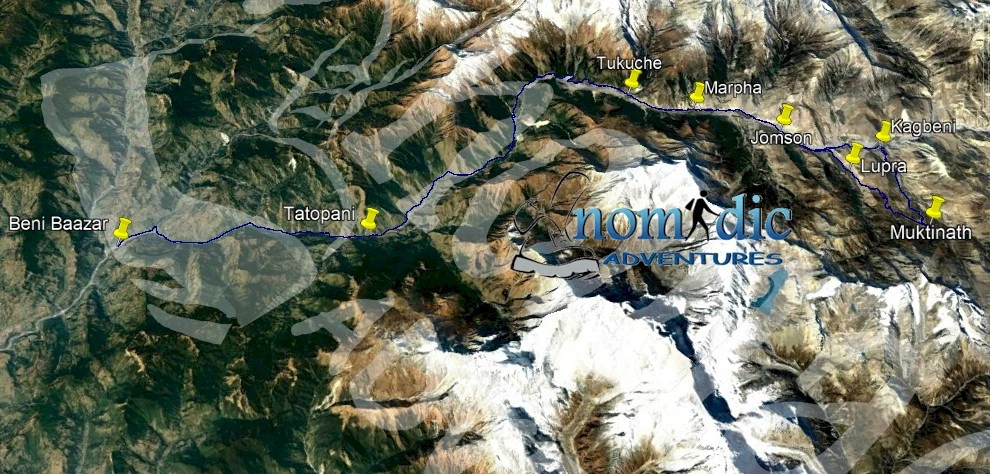
Day 1: Arrival Kathmandu (1350m) and transfer to hotel
Arrival at Tribhuwan International Airport, Kathmandu. Traditional welcome by our airport representative. Tonight you will enjoy a Nepali welcome dinner and show. (D)
Day 2: Kathmandu sightseeing
You will be taken for sightseeing of Kathmandu Valley to explore the vibrant city after breakfast at your hotel. Drive to famous Buddhist Stupa Swayambunath, also known as Monkey temple, on the hill of Kathmandu Valley where you can see stunning view of mountains and Kathmandu valley.
This temple attracts Buddhists and tourists from around the world. Swayambhunath Stupa is the most ancient and enigmatic of all the holy shrines in Kathmandu valley. Its lofty white dome and glittering golden spire are visible from far and wide.
Next is Pashupatinath, the temple of Lord Shiva. This is probably the most famous temple for Hindu in Indian Sub-continent.
After exploring Pashupatinath you will visit fascinating sights of Patan Durbar Square, one of the most glorious examples of traditional Nepalese architecture, full of centuries old temples and palaces. (B)
Day 3: Drive to Pokhara (900m)
After breakfast drive towards the beautiful town of Pokhara in western part of Nepal. Taking fresh air, enjoy the staggering beauty of an area surrounded by some of the world’s highest mountains. In the afternoon, we boat across Lake Phewa for magnificent views of the Annapurna mountain range. Watch reflections of their dazzling white peaks sparkle in the mirror-like water. Annapurna range is probably one of the finest mountain panoramas in the world. Enjoy the sunset in the lake and take dinner in one of the famous restaurant at lake side. (B)
Day 4: Fly to Jomsom (2800m) Cycle to Kagbeni (2850m)
This morning we pack up early and head to the airport for our flight to Jomsom about 22 minutes flight, deep into the heart of the Himalaya. After landing, assemble your bikes and spend some time riding through the cobbled streets of the bustling town.
After lunch, we will head out along a relatively flat section of road to Kagbeni. Overnight in Kagbeni in a Teahouse. (BLD)

Day 5: Kagbeni (2850m) to Muktinath (3810m
Early morning wake up to see a spectacular sunrise view and enjoy breakfast. We then cycle away from Kagbeni off road and mostly uphill. We will follow a dusty jeep track towards the foreboding Thorung La Pass. You’ll ride your mountain bike through the Muktinath pass (4000m). Along the way we will explore the ancient monastery at Jhong with its incredible mountain views. In the mid afternoon we will arrive at Muktinath where we will have time to see the Monastery and Temples. Overnight in Muktinath in a teahouse. (BLD)
Day 6: Muktinath (3810m) to Tukuche (2600m)
After breakfast we cycle away from Muktinath along an enjoyable downhill track descending to the Kaligandaki River valley floor. After a few hours we will reach Marpha, famous for its apple orchids along with local Marpha Brandy. We will then cycle to Tukuche village, an ancient Thakali tribe settlement. (BLD)
At Tukuche you will get incredible views of Mt. Nilgiri and Dhaulagiri.

Day 7: Tukuche (2600m) to Tatopani (1250m)
After breakfast we cycle from Tukuche to Tatopani along a gentle Himalayan flat that winds alongside the valley through small villages and pine forests. We will be blessed with many waterfalls and snow capped peaks along the way.
Our end point for the day is Tatopani, well known for its hot springs. You can spend the rest of the day soaking up the warm water. (BLD)
Day 8: Tatopani (1250m) to Beni (899m) & back to Pokhara
From Tatopani, we will cycle along the Kaligandaki River to the village of Beni. This section of the trail is dirt with many rocky sections. After spending some time in the village, we will drive to Pokhara for our overnight stay. (BL)
Day 9: Fly back to Kathmandu
Today we fly from Pokhara back to Kathmandu and spend the rest of the day exploring, shopping or just relaxing in Kathmandu's numerous cafes and rooftop restaurants before spending the evening celebrating your achievements. (BD)
Accommodation: Hotel
Day 10: Drive to airport for return flight
After breakfast, transfer to the airport for your flight home (B)
End of services
Everest Base Camp or Advanced Base Camp
We are often asked which is the better of the two treks, Everest
advanced base camp from Tibet (north side) or Everest base camp from
Nepal (south side). It really is not an easy question to answer as it
all depends on what you are hoping to get out of the trek. Advanced
Everest Base Camp - 6340m Tibet … Continue reading
KEEPING YOUR CELL PHONE ALIVE ON at altitude
Well the answer is quite simple – snuggle up with all of your batteries
at night or as soon as the temperatures drop. Packing a spars pair of
warm thermal and mohair socks will go a long way to creating a nice warm
package for all of your batteries. Continue reading

